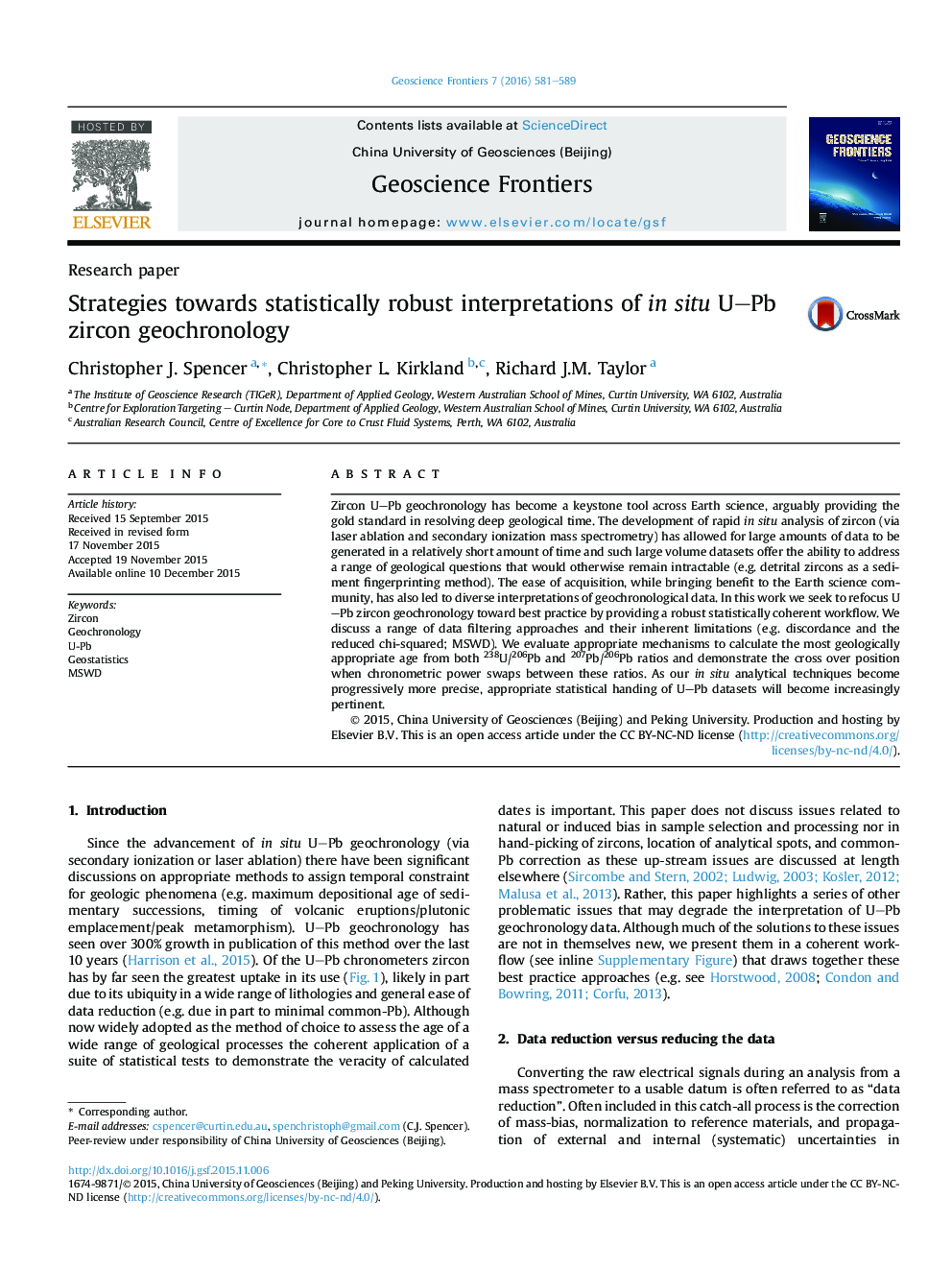| Article ID | Journal | Published Year | Pages | File Type |
|---|---|---|---|---|
| 4681460 | Geoscience Frontiers | 2016 | 9 Pages |
•Use of zircon geochronology has risen dramatically over the past 10 years.•Many statistical tools are inappropriately applied in geological applications.•We provide a coherent workflow to aid in statistically robust interpretations.
Zircon U–Pb geochronology has become a keystone tool across Earth science, arguably providing the gold standard in resolving deep geological time. The development of rapid in situ analysis of zircon (via laser ablation and secondary ionization mass spectrometry) has allowed for large amounts of data to be generated in a relatively short amount of time and such large volume datasets offer the ability to address a range of geological questions that would otherwise remain intractable (e.g. detrital zircons as a sediment fingerprinting method). The ease of acquisition, while bringing benefit to the Earth science community, has also led to diverse interpretations of geochronological data. In this work we seek to refocus U–Pb zircon geochronology toward best practice by providing a robust statistically coherent workflow. We discuss a range of data filtering approaches and their inherent limitations (e.g. discordance and the reduced chi-squared; MSWD). We evaluate appropriate mechanisms to calculate the most geologically appropriate age from both 238U/206Pb and 207Pb/206Pb ratios and demonstrate the cross over position when chronometric power swaps between these ratios. As our in situ analytical techniques become progressively more precise, appropriate statistical handing of U–Pb datasets will become increasingly pertinent.
Graphical abstractFigure optionsDownload full-size imageDownload as PowerPoint slide
